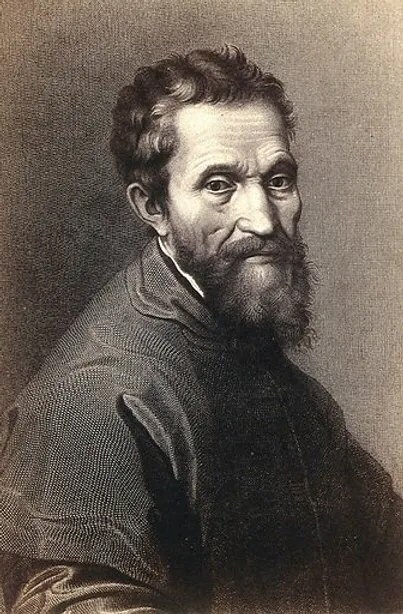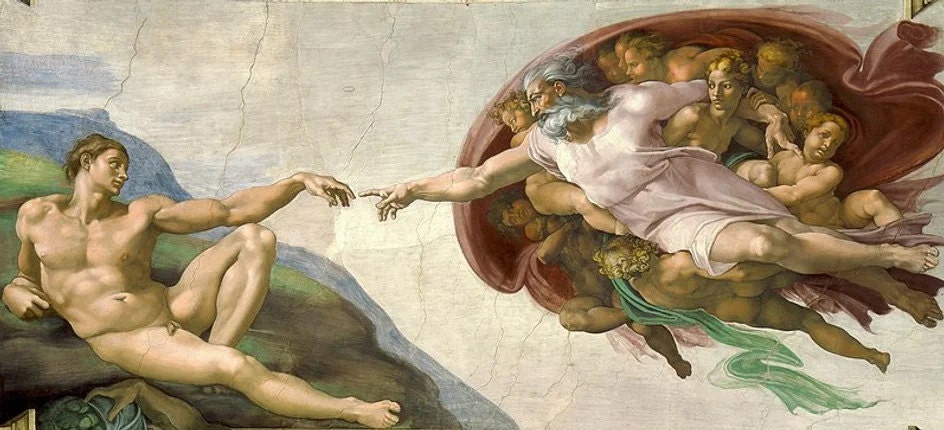
Let’s talk about Michelangelo, an artist who was also a poet. When I first set out to learn a little about an artist who also wrote poetry, I foolishly believed I might find just a few people to read up on, but oh no. Artists quite often express themselves through a variety of ways. In fact, most of them will explore more than one discipline and will excel in many of them at once.

The Creation of Adam
Michelangelo was one such artist, mastering the work of sculptor, painter, and architect. Who hasn’t seen his statue of David, in photos if not in person? Same goes for his frescos in the Sistine Chapel, just two examples of his work that remain for us to marvel at.
He helped create various structures in Florence, where he was called on to design fortifications in times of war as well as beautiful places in times of peace; and his designed were used in constructing St. Peter’s Basilica in Vatican City.
Michelangelo was also a poet, sometimes described as the greatest poet of the Renaissance, and he left behind more than 300 poems. Poetry was so prominent in his thinking, he would sometimes write lines of verse alongside his architectural drawings.
A devout Catholic, Michelangelo would explore his complicated relationship with God through poetry:
There's nothing lower on earth, of less account than I feel I am, and am, Lord, without You. What fluttering faint breath I've left must sue for pardon from You — You height of my desire.

Vittoria Colonna
A close friend of Vittoria Colonna, herself a poet and a spiritual advisor and muse, he would send poetry exclusively to her:
When the prime mover of many sighsHeaven took through death from out her earthly place,Nature, that never made so fair a face,Remained ashamed, and tears were in all eyes.
And to and about his beloved model, Tommaso di Cavalieri, he would write sonnets:
If the hope that you give me is true, if the great desire, that has been granted me is true, let the wall raise up between these two be broken down, for hidden difficulties have a double force.
The Italian phrase "ancora imparo," meaning "yet, I am learning," is attributed to Michelangelo when he was all of 87. Whether or not he ever spoke the phrase is disputed, but that's irrelevant. A rare mind like his was clearly always learning and always creating lasting works of beauty and importance.
SubscribeBONUS STORY: Several years ago, while my daughter and I were on our bi-annual visit to Disney World, we were inside Space Ship Earth at EPCOT when the ride malfunctioned, and our capsule stopped in the Renaissance Era. For several minutes, we were stuck right in front of Michelangelo painting the fresco in the Sistine Chapel, with a heavenly chorus singing in the background. There we sat immersed in this tribute to beauty, and it was very pleasant. Seriously, I didn’t mind. What I did mind was when the ride kicked back into gear, and we progressed into the industrial age—noisy, dirty, uninspiring. Here is a video someone else has shot of that particular moment in Space Ship Earth:
